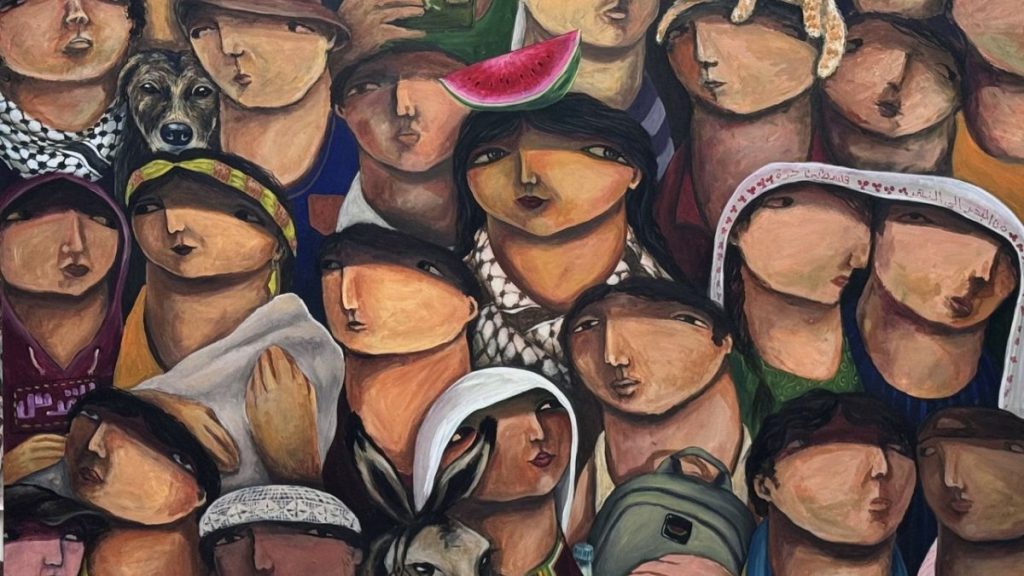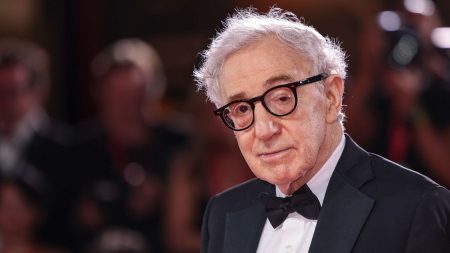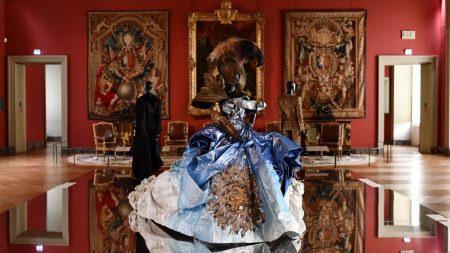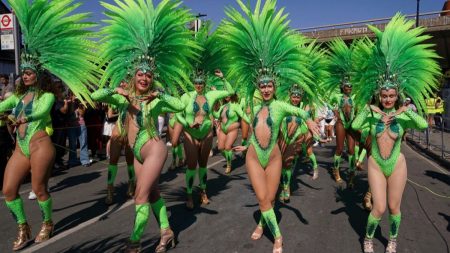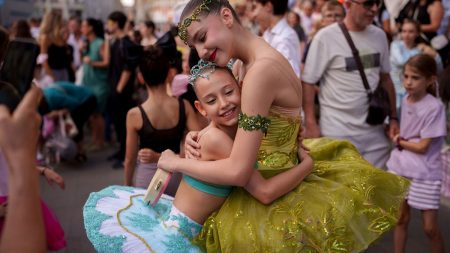The vibrant streets outside London’s Institute of Contemporary Arts (ICA) transformed into a canvas of protest and artistic expression on Tuesday night, as activists rallied in support of the Gaza Biennale and against the ICA’s controversial sponsorship ties. The demonstration, organized by Gaza Biennale – Jinnaah UK (Jinnaah translating to “pavilion” or “wing”), saw powerful projections of Palestinian artwork illuminate the ICA’s walls, serving as a poignant symbol of resilience and creativity amid the ongoing Israeli military offensive in Gaza. This event marked the first UK manifestation of the Gaza Biennale, a global initiative striving to showcase the artistic output of Palestine, both within the besieged Gaza Strip and in international venues.
The Gaza Biennale, featuring contributions from over 60 Palestinian artists, stands as a testament to the enduring power of art in the face of adversity. Many of these artists continue to create under incredibly challenging and precarious conditions within Gaza. Their work offers a profound window into the realities of life under siege, expressing the human cost of conflict and the unwavering spirit of a people determined to preserve their cultural identity. The Biennale’s very existence is a powerful act of resistance, a declaration that Palestinian voices will not be silenced, even as they grapple with the daily struggles of conflict and occupation.
The protest outside the ICA carried a dual message. While celebrating the resilience of Palestinian artists, it also aimed to confront the ICA’s association with Bloomberg Philanthropies, the philanthropic organization of billionaire Mike Bloomberg. Bloomberg Philanthropies is a sponsor of the New Contemporaries exhibition, which was coincidentally being hosted at the ICA on the same evening. The Palestinian Youth Movement (PYM) and other activist groups have criticized Bloomberg Philanthropies for its alleged involvement in funding infrastructure projects in Israeli settlements within the West Bank. These settlements, deemed illegal under international law by the International Court of Justice, are a major point of contention in the ongoing Israeli-Palestinian conflict and a frequent target of international condemnation.
The demonstrators viewed the ICA’s acceptance of sponsorship from Bloomberg Philanthropies as tacit support for the settlement enterprise and, by extension, the Israeli occupation. By projecting artwork onto the ICA’s walls, they aimed to juxtapose the vibrant cultural output of Palestinian artists with the institution’s problematic funding ties, highlighting what they perceive as a contradiction between supporting art and supporting policies that contribute to the dispossession of Palestinians. The protest sought to hold the ICA accountable for its choices and raise public awareness about the ethical implications of accepting funding from organizations linked to controversial activities.
The demonstration outside the ICA resonated with a broader global movement advocating for Palestinian rights and accountability from institutions that support the Israeli occupation. This movement has gained momentum in recent years, with artists, filmmakers, and cultural workers increasingly vocal in their criticism of organizations perceived as complicit in human rights violations. The protest echoed a similar incident the previous year, when numerous filmmakers petitioned the New York Film Festival to sever ties with Bloomberg Philanthropies over its alleged support for training programs for officials in West Bank settlements.
The Gaza Biennale, with its parallel exhibitions in Gaza and partner venues worldwide, underscores the determination of Palestinian artists to transcend the physical and political barriers imposed by the siege. While artists within Gaza face immense difficulties in transporting their work outside the besieged strip, the Biennale’s international network of supporters, including groups like The White Pube, Cultural Workers Against Genocide, and Workers for a Free Palestine, demonstrates a growing global solidarity with their cause. The protest outside the ICA served as a reminder of the power of art as a form of resistance and the importance of holding institutions accountable for their funding choices in the context of ongoing human rights concerns. The convergence of art and activism on the streets of London amplified the voices of Palestinian artists, connecting their struggle for cultural expression with a broader global movement for justice and equality.




